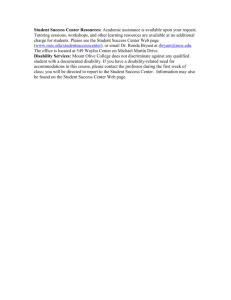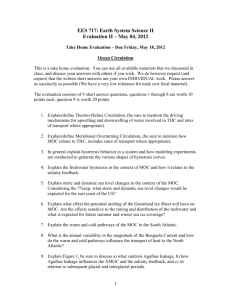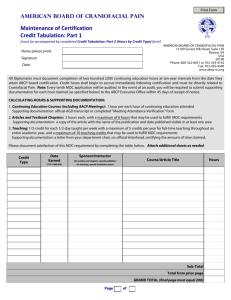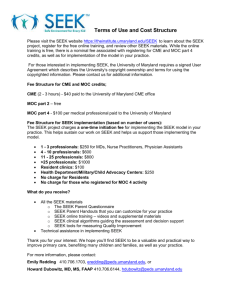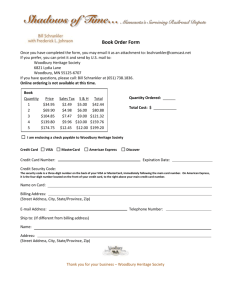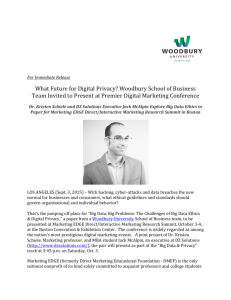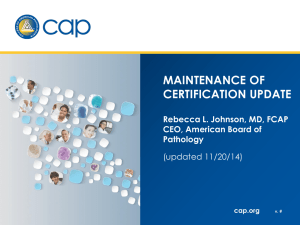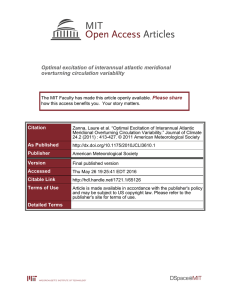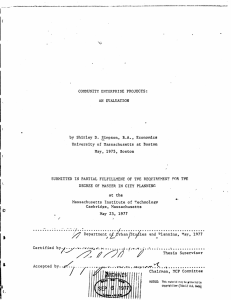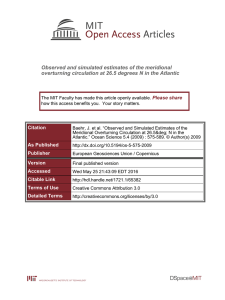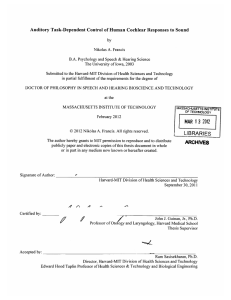1 “Strategic Positioning Paper” Raffie Avakian Management of
advertisement
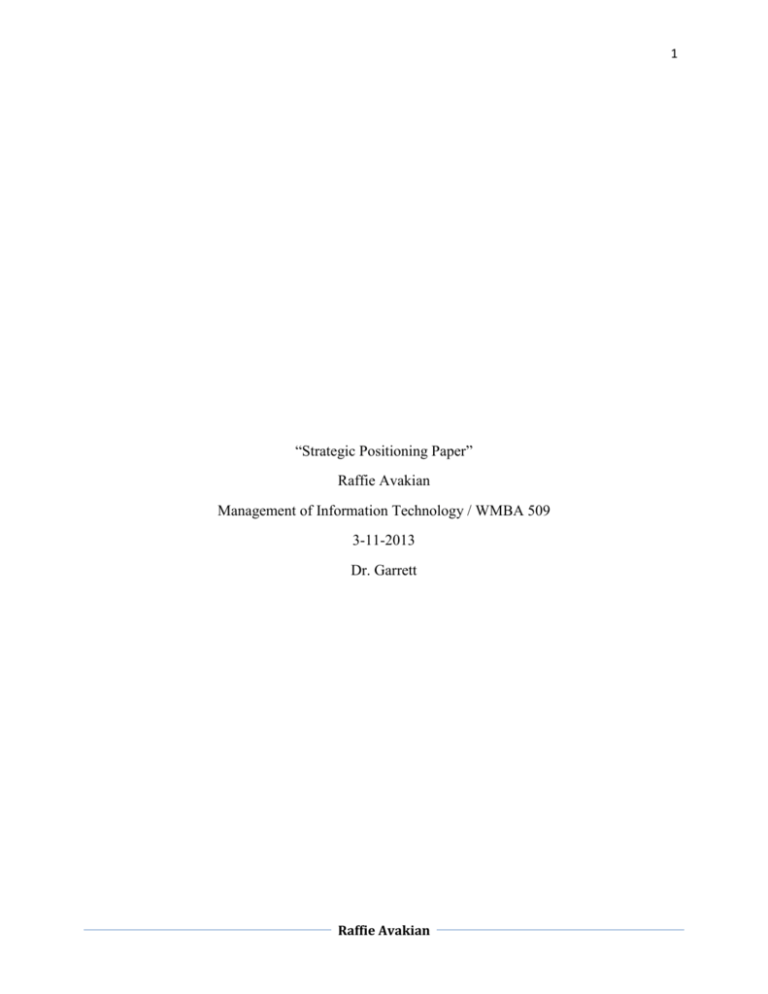
1 “Strategic Positioning Paper” Raffie Avakian Management of Information Technology / WMBA 509 3-11-2013 Dr. Garrett Raffie Avakian 2 Organization’s Mission, Niche, and Competitive Resources MOC Products Company, Inc. (www.mocproducts.com) is a company that develops and provides innovative solutions and products to the automotive industry. The company is a manufacturer and distributor of car-care products (ex: shampoos, degreasers, waxes, polishes, dressings, motor oil supplements, etc.). The company’s mission: “Driving Solutions” for the automotive industry, by service and innovation, domestically and internationally, to exceed the expectations of the customer and the employees. How is your organization responding to IT’s strategic impact? MOC provides “State-of-the-Art” information systems for all employees. The systems include e-mail, voice mail, computers, computer components and software, files generated, various computer systems, and other forms of electronics. MOC sets general rules and guidelines on the philosophy and usage of the computer systems. How effectively does your organization use operational IT? All information systems are the company’s property and are used to facilitate the management and/or transmittal business-related communications and information. The company has the right to inspect, record, and even copy materials placed on the company’s property. Unauthorized use of work for another employer or self-employment is strictly prohibited by the company – only work performed that follows MOC guidelines and rules is allowed. (“Information Systems”, MOC Products Employee Handbook, pp. 23-25). MOC Products strictly forbids abusing the information systems to hurt other employees physically and/or emotionally. This would involve: threatening or harassment; obscene or abusive language; creating, downloading, or transmitting images or messages (or any form of medium) that involves sex, race, religion, color, origin, age, or any attributes. These are “forbidden” by MOC’s policy of “prohibiting employment discrimination and harassment” (almost similar to a “Zero-Tolerance” Policy) (pp.23-25). MOC has the right to access, intercept, read, or disclose any information and content at any time without any notice given (almost like a “search warrant” issued by the police). Employees have no expectation of privacy at all at the company. Any private information must not be placed on MOC information systems or be brought on to the workplace (if the information is on disk, compact disk, or USB port). MOC information systems may not be used to monitor electronic files or networks through “hacking” or “breaching security measures”. This violation could lead to disciplinary action and possible termination (pp.23-25). How does your organization use IT to connect with potential, current, and past customers? The company is a business that serves, and that the customer always comes first. If a problem occurs with a buying or selling of a product, the supervisors take over the incident and not the employees. Customers are treated with respect and proper attention at all times. Customer inquiries have to be addressed professionally, whether in person, telephone, or e-mail. (“Customer Relations”, MOC Products Employee Handbook, p. 25). Raffie Avakian 3 Organization’s Mission, Niche, and Competitive Resources According to the M.B.A. School of Business website and Dr. Satinder Dhiman, chairperson of the School of Business (www.woodbury.edu/school-of-business/programs/mba/), the mission is “to prepare future leaders of organizations who communicate effectively, act ethically, and think globally in a strategic manner”. How is the M.B.A. program responding to IT’s strategic impact? The M.B.A. program at Woodbury University (www.woodbury/school-ofbusiness/programs/mba/program) prepares graduates of business and other fields (ex: science, technology, etc.) to “compete in a world where there is rapid technological and social change”. The program itself is broken down into various subjects of the business environment, where IT plays one of many big functioning areas today and in the advanced technology age. The overall purpose of the program is mostly developing leadership and strategy skills in all forms of the business environment, whether it be Accounting, Finance, IT, Marketing, and Finance (www.woodbury/school-of-business/programs/mba/program). The program mentions IT as an important concept, but does not stress any strategic impact of how IT is used or how it impacts other forms of technology in the world today. How effectively does the M.B.A. program use operational IT? From looking at the Core Courses listed on the M.B.A. program (www.woodbury.edu/school-of-business/programs/mba/curriculum), including electives, preMBA (PMBA) courses, and the “Essentials of Case Analysis” course, all of them include work activities and assignments that will require the use of operational IT (Microsoft Word, Excel, PowerPoint, including the Internet) and will require Business English (mostly developing writing skills) and Business Math (quantitative strategies) to fully strengthen the student to be competitive and aggressive in real-time business case scenarios. Even from outside of the M.B.A. program and outside of Woodbury University, most of the world today is nothing but companies and business organizations that deal with real-time case scenarios, and operational IT is portraying as a “Central Processing Unit” of storing historical and current data and information vital to bringing success to a business in this age. The School of Business at Woodbury does not emphasize as much on IT, only stating one course required for the M.B.A. degree, but maybe more IT classes should be stressed more in the program. How does the M.B.A. program use IT to connect with potential, current, and past students? The M.B.A. program has faculty who are trained professionals and experts who compete with the global market and act ethically, and help train students (in many branches of the program – Accounting, Finance, Marketing, IT, and Economics) to be aware of changes that could bring success or failure in a business, company, or organization. The IT is a “gateway” of communication for students to gain knowledge, confidence, encouragement, and support from their mentors (the faculty), who provide the “tools” essential for success in the world today. Raffie Avakian
